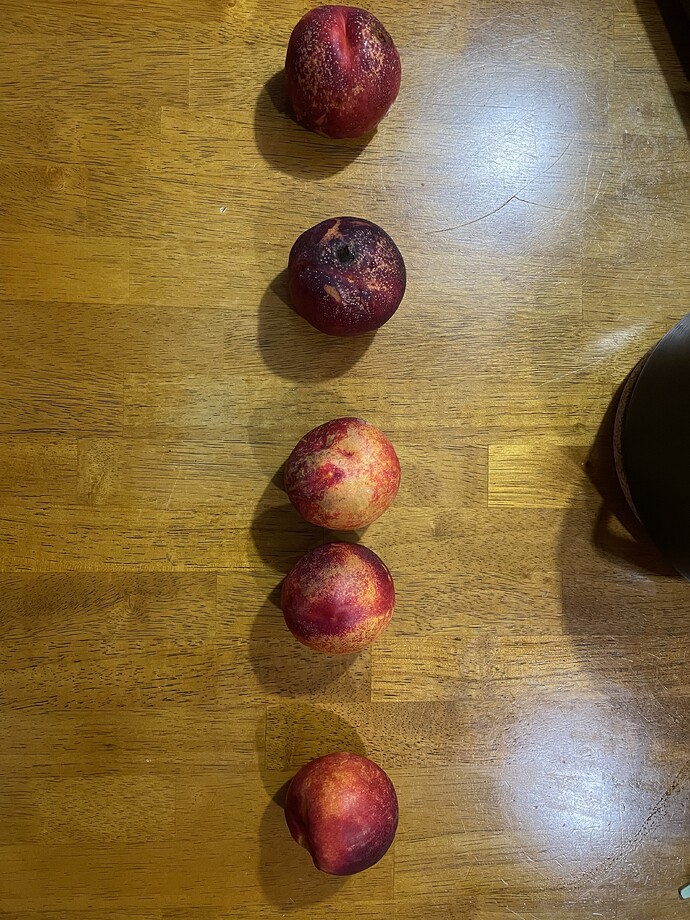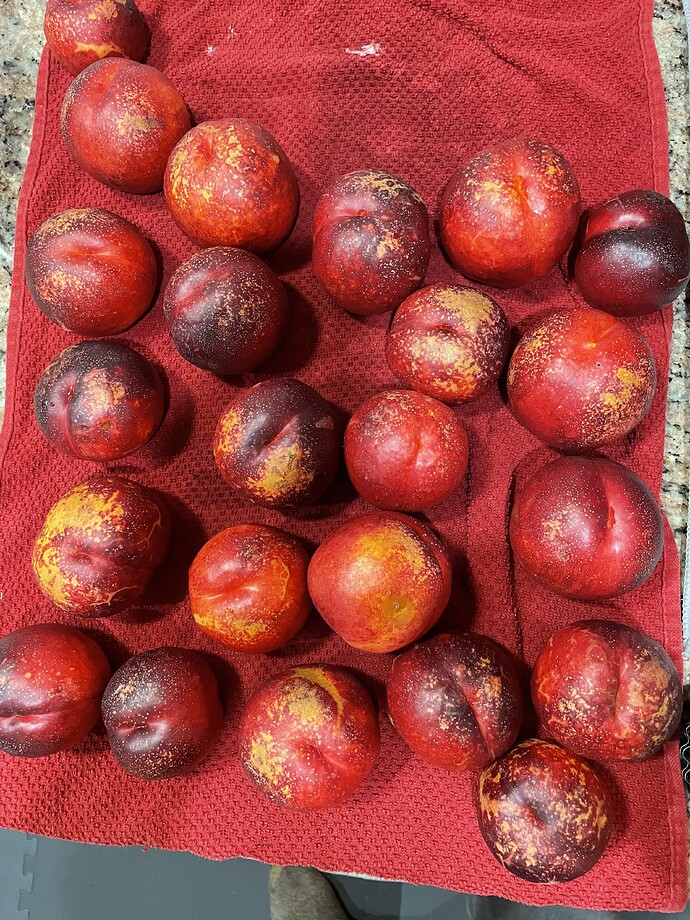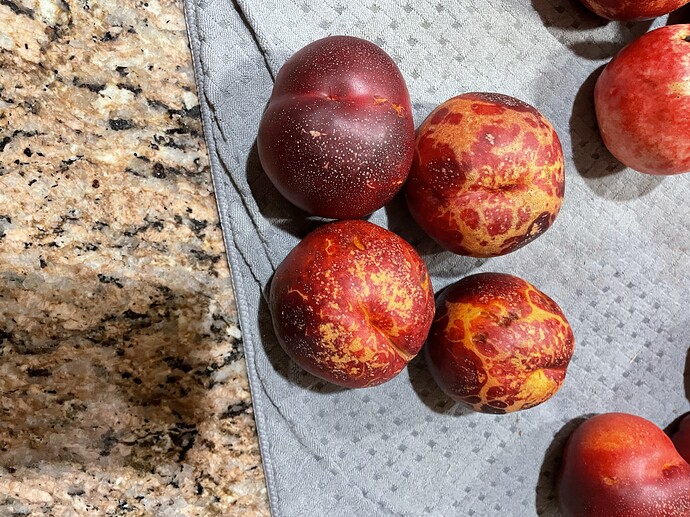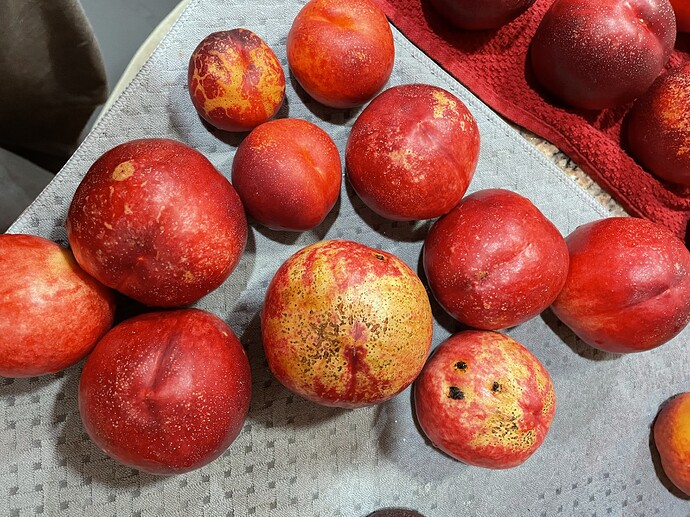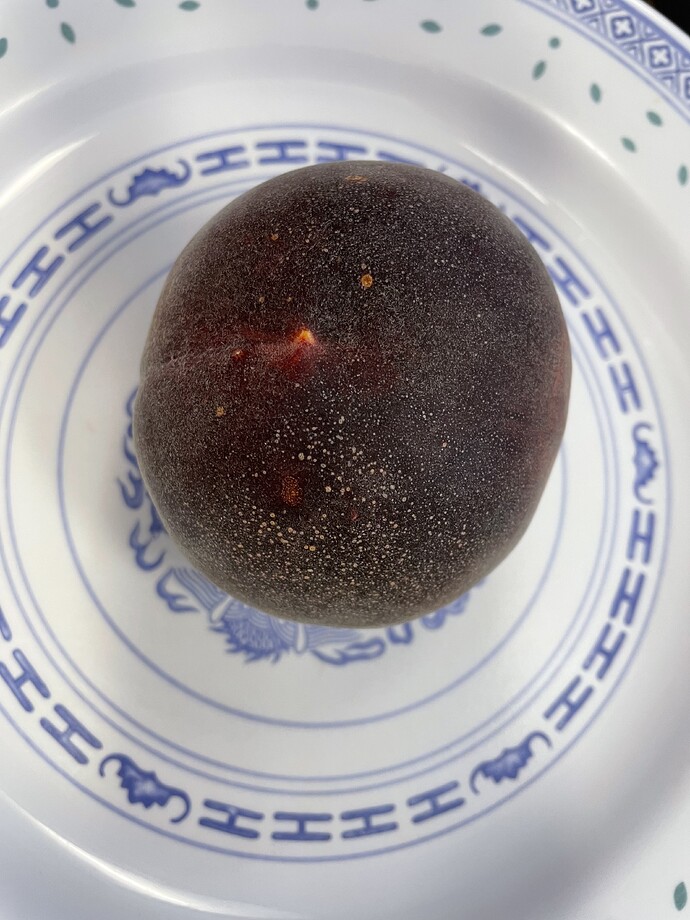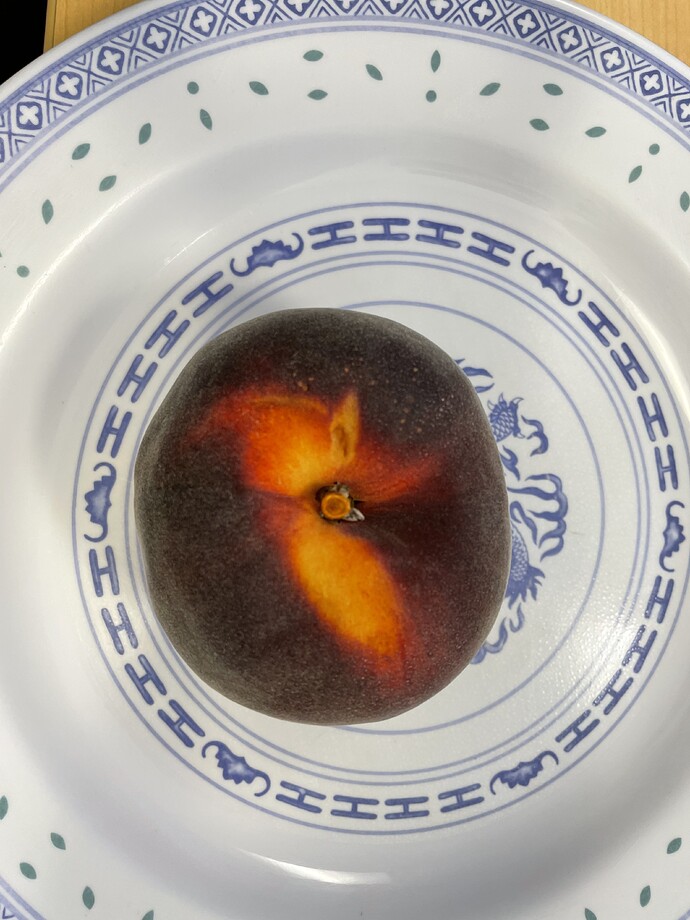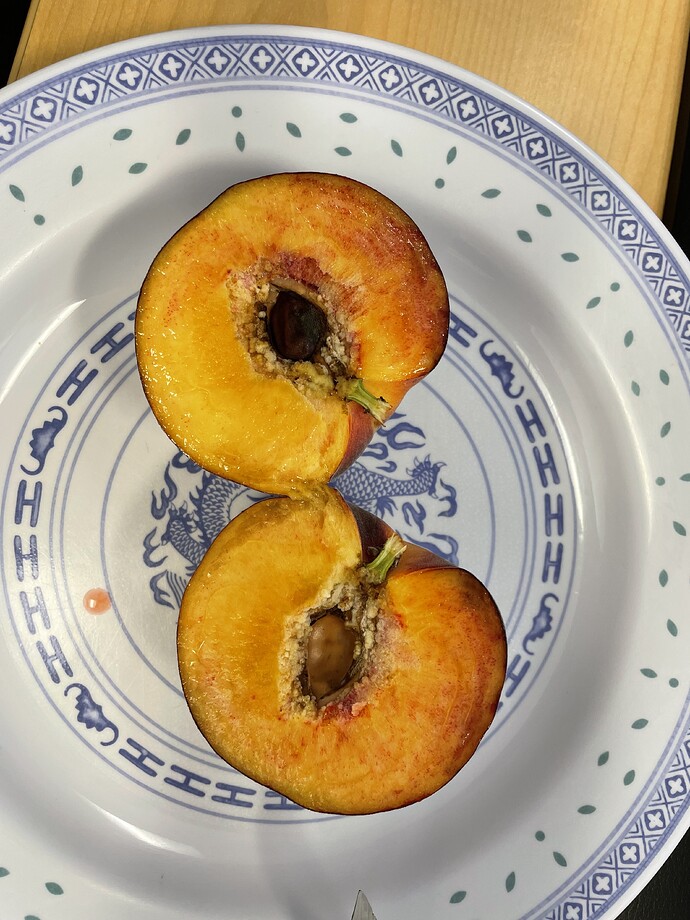I see you’re in Zone 5, which I had understood to be pretty marginal for nectarines. Have those trees seen temps down to -20F/-30C? That’s about as cold as it gets where I live, and I had written off nectarines as being out of zone, but if they’ll grow here I want some!
If you can grow peaches, then you should be able to grow nectarines. There will be inter variety variations in cold tolerance, but that should not be specific to peaches vs nectarines. I’d pick two early varieties and try growing them.
Except that peaches are so much less susceptible to brown rot and less attractive to certain insects- from plum curculio to wasps… oh, and birds. Nectarines, even those bred by Rutgers, are also more susceptible to ovary damage from sudden drops in temps in late winter into early spring which can deform or destroy fruit.
I live in a soup bowl of high humidity and a lot of insect and bird pressure, so I know. I also get to compare with a lot of other sites. It does depend on location beyond zones.
The person inquiring was concerned about winter minimum temperatures, not all the other factors that you’re listing, and that I am well aware of, hence my response addresses his concern. Obviously he is living in a very different geography and climate compared to me and you, and I think he should still try growing them despite all those potential issues.
I always put things in context of the general forum readership. There’s is nothing wrong with what you wrote, so I should have made clear the intent of my comment… not to contradict, or correct- but to augment.
However, I also included the fact that nectarines do tend to be considerably more cold tender than peaches. I’ve have seen this clearly several times over the years with a wide range of nects. I don’t grow Hardi-red or any of the varieties considered especially cold-hardy so I’m not knowledgeable about them. Maybe they have equivalent hardiness as the hardiest peaches- do you think they do?
Honestly, I don’t know. I don’t have enough datapoints across different varieties of both peaches and nectarines to answer this question.
Being the same species, with one phenotypic difference (fuzz), any general difference in behavior or quality, across varieties, should be somehow related to fuzz. Most of the differences you mentioned in your first post are fuzz related. However, I don’t know how to trace back fruit bud cold tenderness to fuzz that is formed much later.
I am trialing Honey Blaze, Honey Diva, and Honey Halo for 2 years now in Z5. They are all survived the -18F this past winter but theirs flowers buds froze out so no fruit yet. Hopefully the weather milder next year so I can taste their fruis. Thanks @Ahmad .
Tony
I just grilled CHAT and was surprised by some of what it spit out. Fantasia and Redgold are two Canadian bred varieties that beat Rutgers and CA bred nects for cold hardiness, and to my palate, are among the best you can grow in the northeast. Redgold is my flag bearer for highest quality.
CA has had the most affect on breeding U.S. varieites and the goal was never about bud hardiness. Rutgers bred from CA germoplasm. I will say that Silver Gem is pretty rugged and early enough not to require more protection than peaches for me. On good seasons it is a great nect, but the last two haven’t been good for it at my site, or any other early nects. The mid to lates are doing better.
@EDLO01 @fruitgrower @MichaelTheBeloved
Today I ate my first soft ripe pick of Flavor Top, SunGlo, Diamond Ray and Candy Sprinkles. These are all sweet tart nectarines, and they are fantastic!
Candy Sprinkles and Diamond Ray are amazing, Flavor Top was excellent and Sun Glo was very good (I ate better SunGlo before). The first two have very rich flavor, high acid and high sweetness. In my opinion they are significantly better than Flavortop, which is excellent.
The top one is Diamond Ray, then Candy Sprinkles, then two Flavortop, and lastly SunGlo.
Ahmad
You have nectarines coming out your ears.
I have one full sized nectarine. I just looked at a few hundreds of fruit on it and wonder what I am to do with those many fruit!!!
Thanks, this is what I wanted to know. I do have one supposedly cold tolerant peach (Frost Peach) that’s alive but struggling. I don’t think it loved -30 C. I don’t really see anybody around here growing nectarines, which says something by itself, but they’re also less popular than peaches. Hopefully somebody in my area has the Redgold variety that alan mentioned.
In theory, my dry summers should be an advantage in terms of insect and disease issues.
Food pantry, if one is around
Thats so good to hear!!! I did a video on Candy Sprinkles just a few weeks ago hear and it was just as good as always. That fit with a number of reports from colder climates, all good news. Personally, I almost put Flavor Top in a different class. I always think of it as a Fantasia Type along with Flamekist. All similar in taste and size in the 50 year + modern home garden nectarines. They are quite good, but somewhat different from introductions from breeders of the last 30 years
Thats June Pride!!! wow how’s the flavor? Looks really good, I really want to taste it. The June Pride Here, ripe in late June is excellent and an a popular low chill selection!!
[quote=“Ahmad, post:671, topic:11982”]
Emeraude, love it!, but the flavor can be hit or miss in the central valley depending on the early heat
All my friends, some neighbors, my coworkers and relatives enjoy my harvest… my dehydrator too ![]()
Candy Sprinkles was the best (most rich) in the tasting yesterday, followed by Diamond Ray.
This June Pride was excellent, rich flavor, sweet and juicy. Usually I like to peel peaches before eating them, as I don’t like the fuzz, but with this JP I ate every thing as flavor is most concentrated at the skin.
The Emeraudes are excellent this year. They are my wife’s favorite after Zephyr. I love them too.
I can’t find my notebook.
When did your Emeraude and Zephyr ripen?
My Arctic Sweet is ripening now, a week after Arctic Glo.
